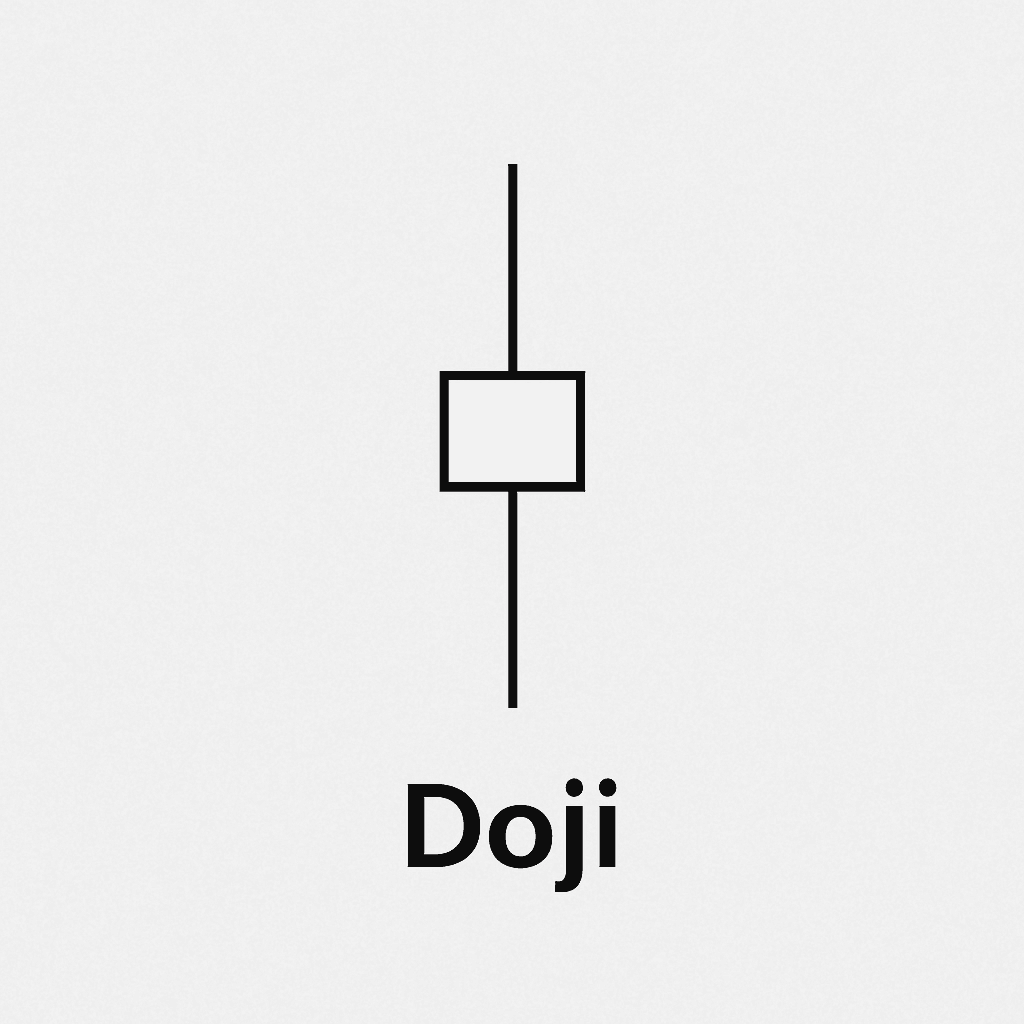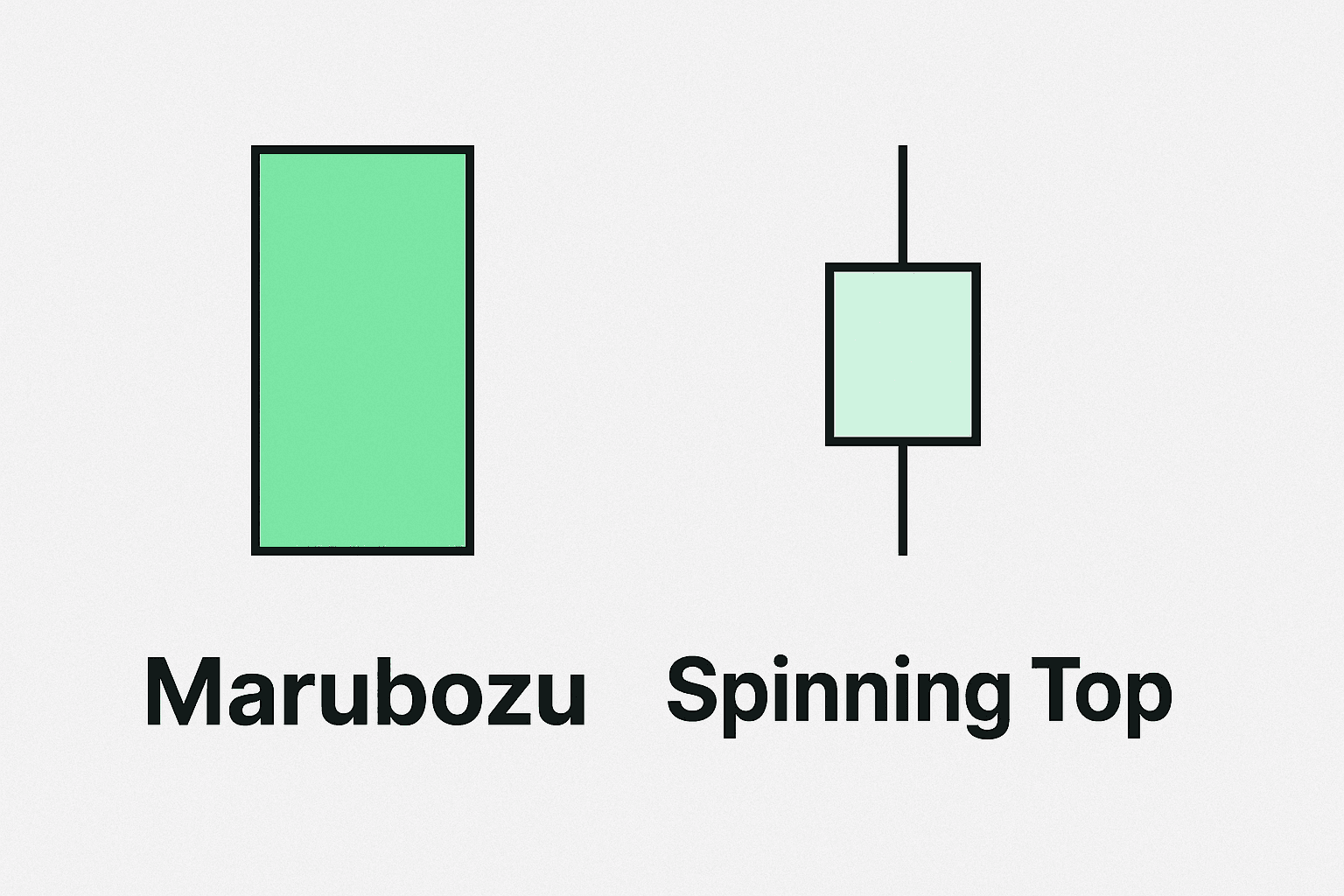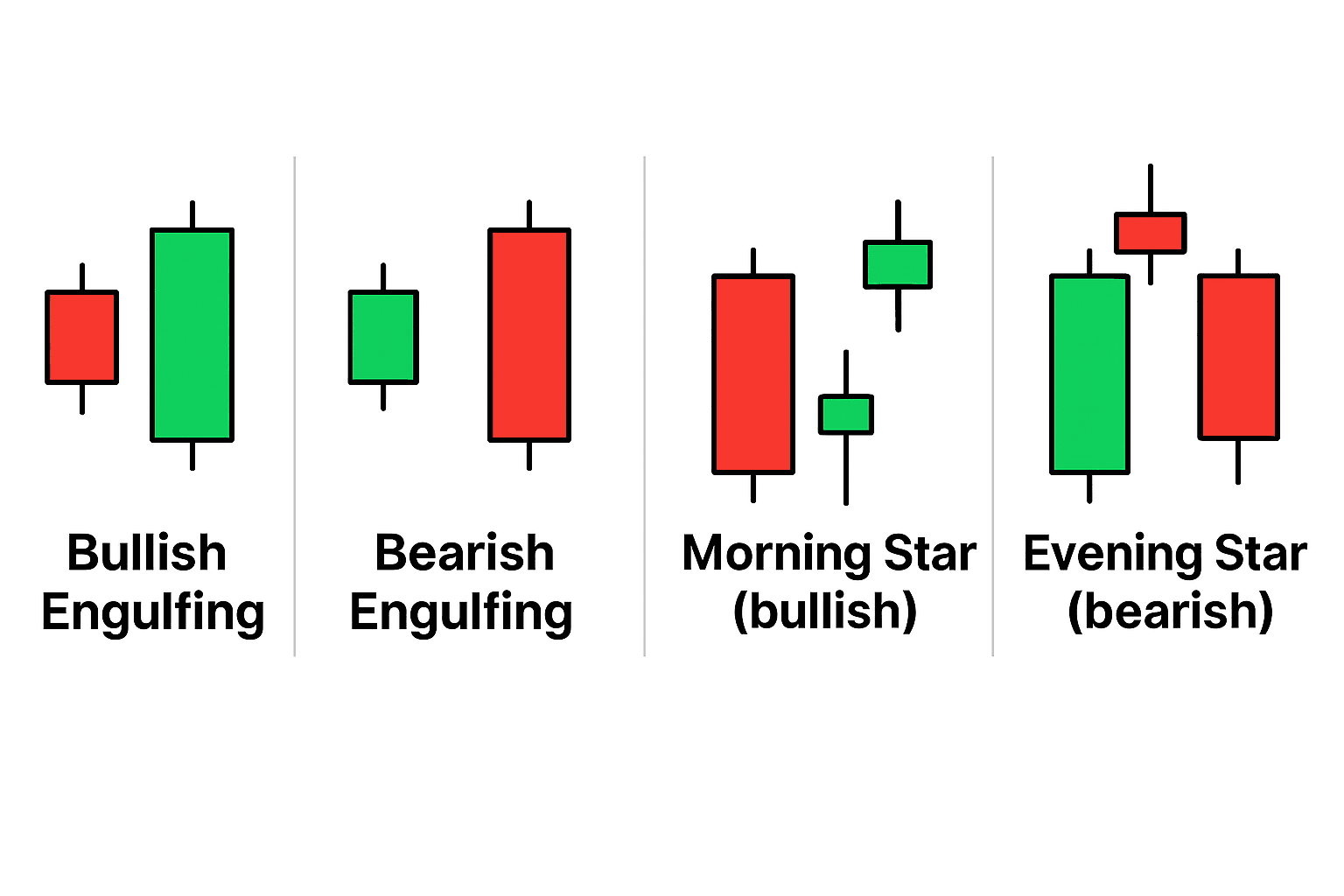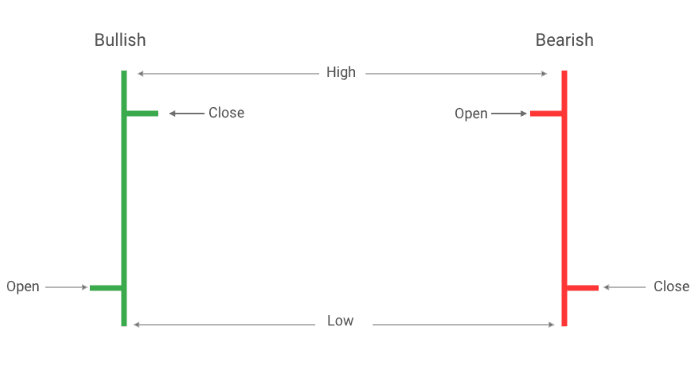Reading Candles, Bars, and Price Charts (Beginner Guide)
Charts are just stories of price over time. Once you learn how to read the letters in that story — candles and bars — everything starts to click.
1) What is a candlestick?
Each candlestick shows four prices for a chosen time period: Open, High, Low, Close. Body color: Green or white (bullish) when Close > Open; Red or black (bearish) when Close < Open. Wicks or shadows are thin lines showing how far price moved beyond the body. On a daily chart, each candle represents one trading day’s OHLC.

2) What a single candle can tell you
Big body with tiny wicks indicates a strong push, buyers if green, sellers if red. Small body with long wicks shows indecision or rejection of certain prices. Long lower wick suggests buyers stepped in and pushed price up from lows. Long upper wick suggests sellers pushed price down from highs. Context matters — a long lower wick at support is more meaningful than the same candle in the middle of nowhere.

3) Popular single-candle patterns
Doji (indecision): tug-of-war, best at support or resistance after a strong move; wait for the next candle for confirmation. Hammer (bullish reversal hint): small body on top with long lower wick, best in downtrends or support zones; many place a stop below the hammer’s low. Shooting Star (bearish reversal hint): small body near the bottom with long upper wick, best in uptrends or resistance; some place a stop above the star’s high. Marubozu (no wicks, full body): pure momentum, bullish in uptrends or bearish in downtrends. Spinning Top (small body, wicks both sides): lighter indecision than a doji.

Additional visuals for hammer and shooting star and marubozu versus spinning top are helpful when learning.

More examples of marubozu and spinning top for comparison.

4) Two- and three-candle patterns (super common)
Bullish Engulfing: small red followed by larger green that engulfs the body, best near support after a drop. Bearish Engulfing: small green then larger red that engulfs, best near resistance after a rally. Morning Star (bullish): big red, small indecision often a doji, then big green. Evening Star (bearish): big green, small indecision, then big red. Always check location and volume for confirmation.

5) OHLC bars vs candles
An OHLC bar shows the same data as a candle without the colored body. Left tick is Open, right tick is Close. Some traders prefer bars for a cleaner look; others prefer candles because they’re easier to read at a glance. Both tell the same story.

6) Timeframes: intraday vs daily vs weekly
Intraday 1m, 5m, 15m provide fast signals with more noise. Daily offers a clearer big picture for swing trades. Weekly or monthly show the macro trend used by investors. A hammer on the daily is stronger than a hammer on the 1-minute.
7) Checklists you can use
Before acting on a candle pattern: What is the trend? Are we near support or resistance? Is there confirmation with the next candle? Did volume increase on the signal? Where is your stop, typically beyond the pattern’s wick? Is the reward at least 2x your risk? Example: Price rallies into prior highs at resistance. A shooting star forms. Next day closes lower for confirmation. Possible short with stop above the star’s high and target back to the nearest support.
8) Common mistakes to avoid
Trading a doji or hammer without context. Ignoring confirmation and jumping in before the next candle. Setting stops inside the candle’s wick and getting wicked out. Using patterns alone without a plan for risk management and targets.
9) Mini-practice (quick quiz)
1) Long lower wick hammer on daily at support after a selloff suggests buyers defended and a possible bullish reversal if confirmed. 2) Shooting star with long upper wick at prior highs indicates rejection at resistance and a possible bearish reversal if confirmed. 3) Small body with wicks both sides and close near open indicates doji or spinning top and indecision; wait for the next candle.
Key Takeaway
Body shows who controlled the session; wicks show where control was tested and rejected. Patterns like doji, hammer, shooting star, and engulfing are clues, not guarantees. The location with trend and support or resistance and confirmation is what turns a clue into a higher-quality signal.
🔑 Next up in Charting & Price Analysis: Support & Resistance: How to Find Key Levels and Use Them in Trades
